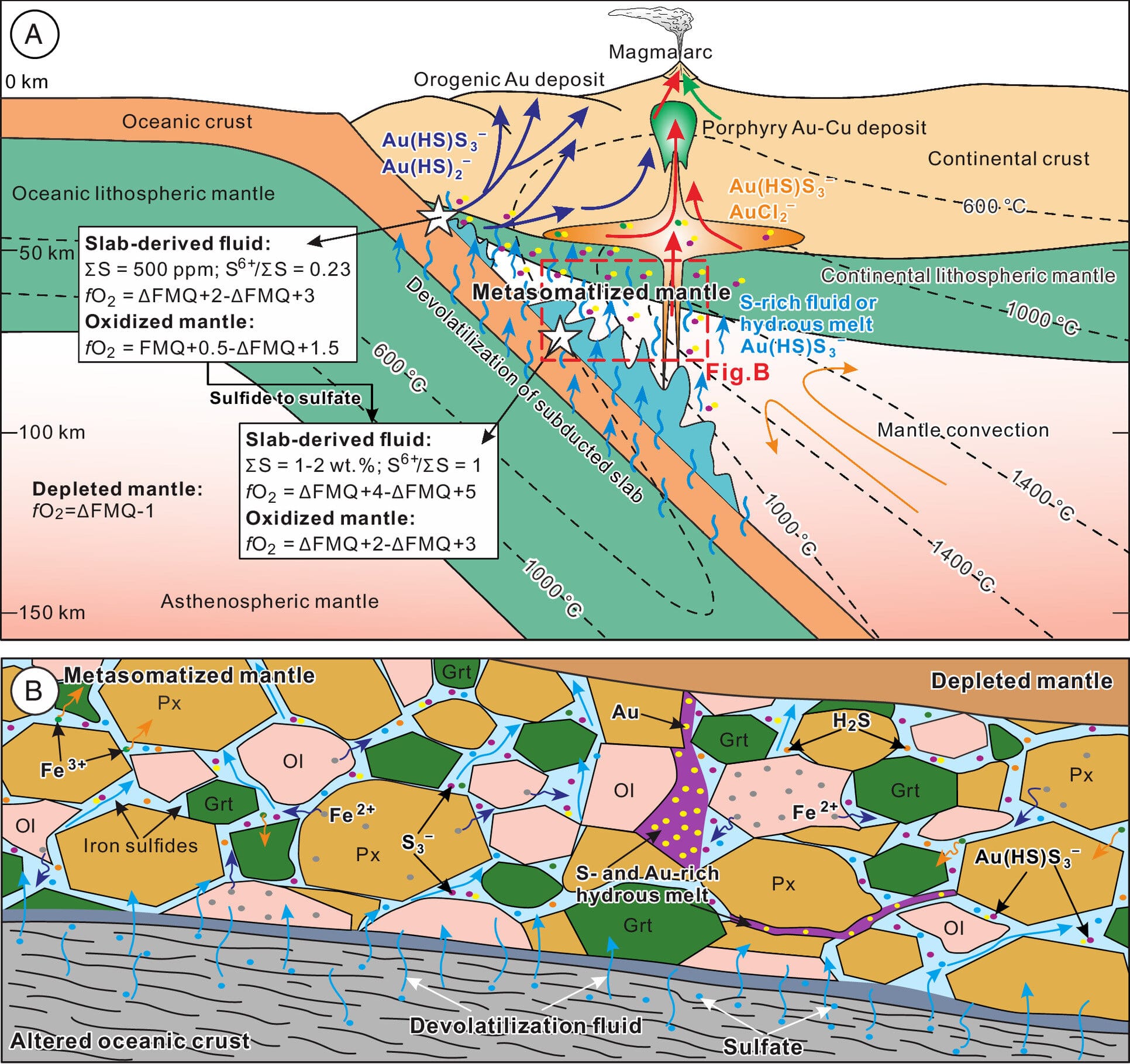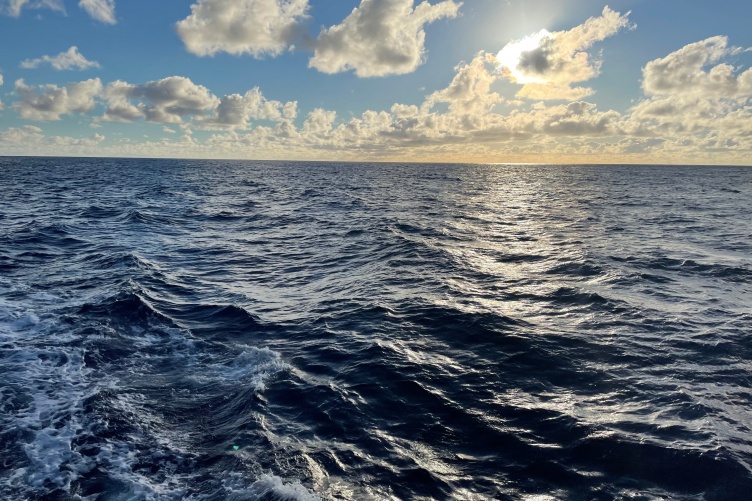A groundbreaking discovery involving gold deposits has emerged from a collaborative research team, including Adam Simon, a professor from the University of Michigan’s Department of Earth and Environmental Sciences. The research has unearthed crucial new insights into how gold is transported from Earth’s mantle to the surface, a process that has long been shrouded in mystery. This discovery has significant implications for understanding gold formation in volcanic ore deposits, especially those located around the Pacific Ring of Fire.
Gold is commonly found in ore deposits associated with active volcanoes, particularly in regions known as subduction zones. These areas, where one tectonic plate dives beneath another, are critical in the formation of volcanic activity. Scientists have known for some time that gold originates from the mantle of Earth, and it is carried to the surface by magma. However, the exact mechanism behind the migration of gold from the deep mantle to the surface has been a subject of debate within the scientific community.
Through the use of advanced numerical modeling, the research team has successfully simulated the conditions under which gold is transported from the mantle to magma, eventually forming gold deposits in volcanic ore. The key to this discovery lies in the identification of a specific gold-sulfur complex—referred to as the gold-trisulfur complex—whose existence had been a topic of skepticism.
The model the team developed has revealed the specific thermodynamic conditions under which this complex forms. At certain pressures and temperatures, about 30 to 50 miles beneath active volcanoes, the gold-trisulfur complex is stable. The discovery provides a clearer understanding of how gold is transferred from the mantle into magmas that later reach the Earth’s surface. These findings, published in the Proceedings of the National Academy of Sciences, present the most plausible explanation to date for the high concentrations of gold found in some mineral systems within subduction zone environments.
Adam Simon, a leading author of the study, explains that the thermodynamic model developed by the team is the first of its kind to demonstrate the presence of the gold-trisulfur complex under specific conditions. Prior to this work, the gold-trisulfur complex was not known to exist under the pressure and temperature conditions found in the mantle. This revelation is essential, as it offers a comprehensive understanding of the geochemical processes involved in gold enrichment in volcanic ore deposits.
Subduction zones are dynamic and geologically active regions where tectonic plates collide. These zones, particularly those surrounding the Pacific Ocean, are home to some of the most active volcanoes in the world. Countries such as New Zealand, Indonesia, Japan, the Philippines, Russia, Alaska, Canada, and Chile lie along the Pacific Ring of Fire, and each is host to volcanoes that sit above subduction zones. The connection between volcanic eruptions and the formation of gold deposits has long been recognized, but how these deposits form and why some volcanic systems are particularly rich in gold remained unclear. The recent study helps to explain the concentration of gold in these areas.
Gold’s affinity for the mantle is well-known. However, when certain conditions arise—specifically when a fluid containing the trisulfur ion is introduced from the subducting plate—gold has a strong tendency to bond with trisulfur ions. This reaction forms a gold-trisulfur complex, which is highly mobile in magma. This complex, once formed, can easily migrate with the molten rock, moving toward the Earth’s surface as magma ascends. The gold is thus carried upward by the magma and can eventually deposit in ore deposits near volcanic regions.
Prior research had identified various sulfur compounds that interact with gold. However, this study is the first to propose and substantiate a thermodynamic model that explains the role of the gold-trisulfur complex in gold transport. The team, which included scientists from China, Switzerland, Australia, and France, conducted laboratory experiments where they controlled temperature and pressure conditions and measured the results. The findings were then applied to a thermodynamic model that can predict how gold behaves under natural, real-world conditions.
Simon notes that this study significantly advances the scientific understanding of gold transport in subduction zones. By combining the findings of this study with existing research, the team has created a more complete picture of the conditions that lead to the formation of gold-rich ore deposits. This newfound knowledge has profound implications for gold exploration. Understanding the geochemical processes that govern the concentration of gold in volcanic systems can help guide future exploration efforts, potentially making the search for gold more efficient and effective.
The ability to predict where gold-rich deposits may form could revolutionize the mining industry. Since gold is one of the most highly sought-after precious metals, the discovery of new, abundant gold deposits could have far-reaching economic implications. Additionally, this research also opens the door to further studies into the broader processes involved in magma dynamics and mineral formation, particularly in subduction zones where many valuable minerals are concentrated.
The study also contributes to the broader field of geochemistry, offering insights into the interactions between elements under extreme conditions in the Earth’s interior. The processes at work beneath the Earth’s surface—such as the movement of magma, the role of sulfur ions, and the formation of mineral complexes—are essential to understanding not only gold deposits but also other mineral systems. By continuing to explore these phenomena, scientists can gain a deeper understanding of how the Earth’s geological processes shape the distribution of valuable resources.
This discovery also highlights the importance of collaboration in advancing scientific knowledge. The diverse international team that contributed to this research brought a range of expertise and perspectives, which was essential in tackling the complex questions surrounding gold formation. The use of cutting-edge computational techniques, along with experimental data, has proven invaluable in creating a robust and reliable model that can be applied to real-world scenarios.
Reference: Deng-Yang He et al, Mantle oxidation by sulfur drives the formation of giant gold deposits in subduction zones, Proceedings of the National Academy of Sciences (2024). DOI: 10.1073/pnas.2404731121










